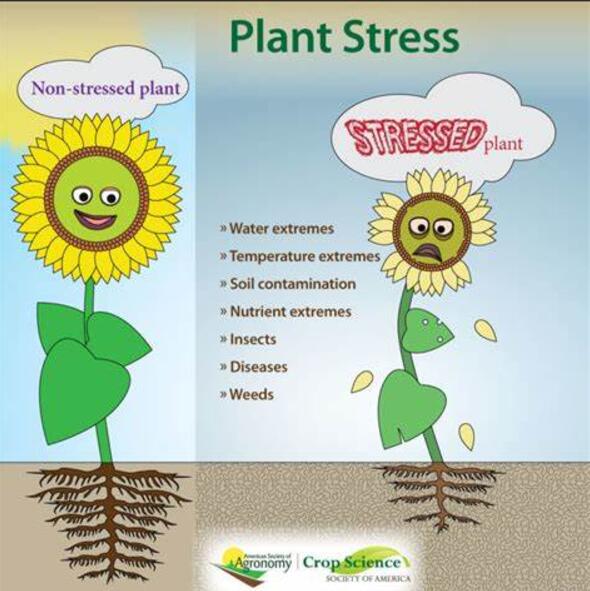Transcriptomic and ultrastructural insights into zinc-induced hormesis in wheat seedlings: Glutathione-mediated antioxidant defense in zinc toxicity regulation
IF 6.8
Q1 PLANT SCIENCES
引用次数: 0
Abstract
Zinc (Zn), an essential nutrient element, exhibits hormesis in plants-beneficial at low doses but toxic at high concentrations. To understand the molecular mechanisms underlying this hormetic response with low-dose stimulation and high-dose inhibition in wheat, we conducted transcriptomic analysis under different Zn treatments. Low Zn concentration (50 μM) promoted plant growth by maintaining chlorophyll content, enhancing MAPK signaling, phytohormone signaling, glutathione metabolism, nitrogen metabolism, and cell wall polysaccharide biosynthesis. High Zn concentration (500 μM) induced ultrastructural damage and suppressed photosynthesis, chlorophyll metabolism, and secondary metabolisms, while upregulating glutathione metabolism. Molecular docking revealed that hydrogen bonds between Zn and antioxidant enzymes facilitated reactive oxygen species scavenging. Notably, exogenous glutathione (GSH) application enhanced wheat tolerance to Zn stress by strengthening the antioxidant defense system and improving photosynthetic capacity. Our findings elucidate the underlying mechanisms of Zn hormesis in wheat and demonstrate the application potential of glutathione in mitigating Zn toxicity, providing strategies for managing Zn-contaminated soils.

小麦幼苗锌诱导激效的转录组学和超微结构研究:谷胱甘肽介导的锌毒性调节中的抗氧化防御
锌(Zn)是一种必需的营养元素,在植物中表现出刺激效应——低剂量有益,高浓度有毒。为了了解小麦低剂量刺激和高剂量抑制的分子机制,我们进行了不同锌处理下的转录组学分析。低锌浓度(50 μM)通过维持叶绿素含量、增强MAPK信号、植物激素信号、谷胱甘肽代谢、氮代谢和细胞壁多糖生物合成等方式促进植物生长。高Zn浓度(500 μM)诱导植物超微结构损伤,抑制光合作用、叶绿素代谢和次生代谢,上调谷胱甘肽代谢。分子对接表明,锌和抗氧化酶之间的氢键促进了活性氧的清除。值得一提的是,外源谷胱甘肽(GSH)通过增强抗氧化防御系统和提高光合能力增强了小麦对锌胁迫的耐受性。我们的研究结果阐明了小麦锌激效的潜在机制,并展示了谷胱甘肽在减轻锌毒性方面的应用潜力,为锌污染土壤的治理提供了策略。
本文章由计算机程序翻译,如有差异,请以英文原文为准。
求助全文
约1分钟内获得全文
求助全文
来源期刊

Plant Stress
PLANT SCIENCES-
CiteScore
5.20
自引率
8.00%
发文量
76
审稿时长
63 days
期刊介绍:
The journal Plant Stress deals with plant (or other photoautotrophs, such as algae, cyanobacteria and lichens) responses to abiotic and biotic stress factors that can result in limited growth and productivity. Such responses can be analyzed and described at a physiological, biochemical and molecular level. Experimental approaches/technologies aiming to improve growth and productivity with a potential for downstream validation under stress conditions will also be considered. Both fundamental and applied research manuscripts are welcome, provided that clear mechanistic hypotheses are made and descriptive approaches are avoided. In addition, high-quality review articles will also be considered, provided they follow a critical approach and stimulate thought for future research avenues.
Plant Stress welcomes high-quality manuscripts related (but not limited) to interactions between plants and:
Lack of water (drought) and excess (flooding),
Salinity stress,
Elevated temperature and/or low temperature (chilling and freezing),
Hypoxia and/or anoxia,
Mineral nutrient excess and/or deficiency,
Heavy metals and/or metalloids,
Plant priming (chemical, biological, physiological, nanomaterial, biostimulant) approaches for improved stress protection,
Viral, phytoplasma, bacterial and fungal plant-pathogen interactions.
The journal welcomes basic and applied research articles, as well as review articles and short communications. All submitted manuscripts will be subject to a thorough peer-reviewing process.
 求助内容:
求助内容: 应助结果提醒方式:
应助结果提醒方式:


